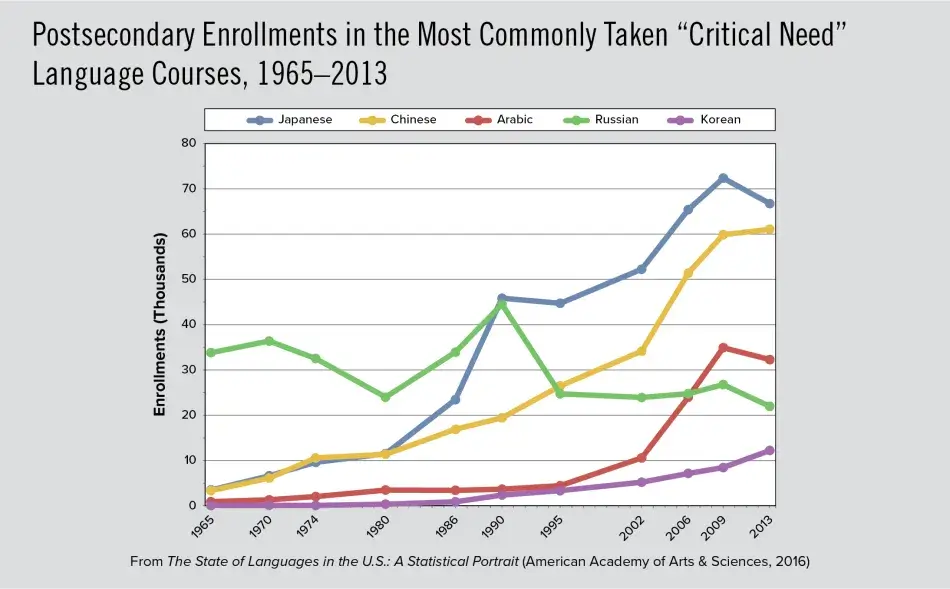Postsecondary Enrollments in the Most Commonly Taken “Critical Need” Language Courses, 1965–2013

The federal government designates some languages with relatively small student enrollments as representing a “critical need” for national security and provides incentives to study these languages. As the rise and fall of course-taking in these languages indicates, the study of particular languages tends to follow events. For instance, the study of Russian decreased sharply after the fall of the Berlin Wall and the study of Arabic increased sharply after September 11, 2001.
In addition to the languages of nations that represent a significant strategic interest to the United States, a number of other languages designated as a critical need—Hindi, Indonesian, Swahili—reflect a desire for stronger ties with important emerging regions around the world.